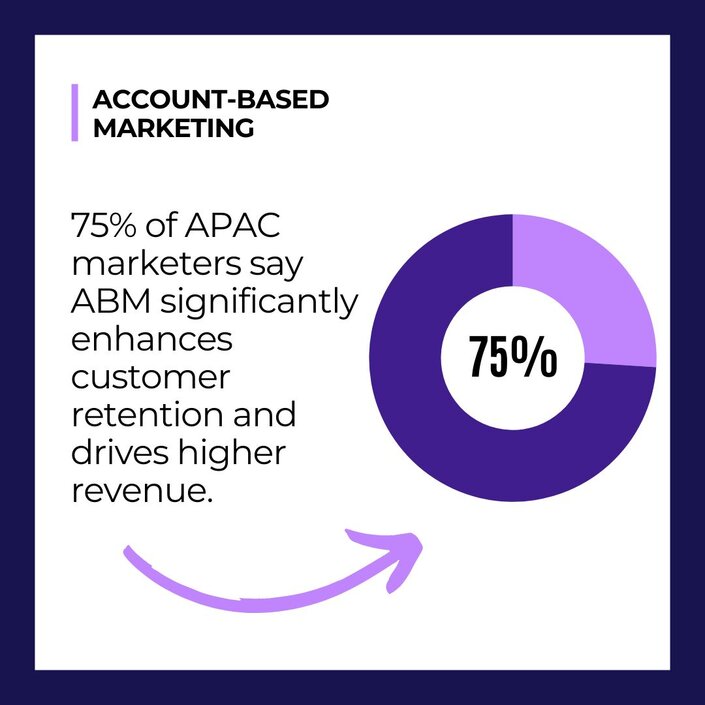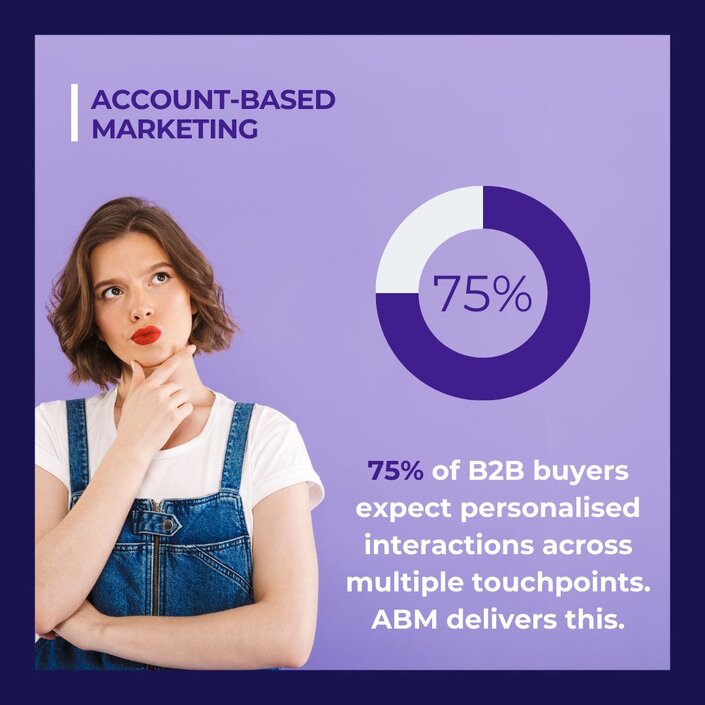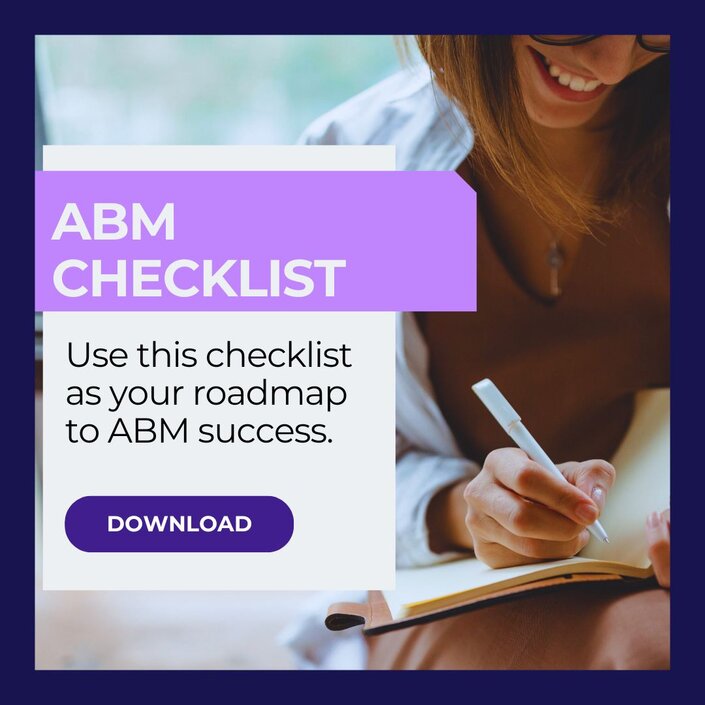What is Account-Based Marketing
Account-based Marketing (ABM) is the “luxury boutique” of B2B marketing. It’s about crafting tailored, targeted campaigns for specific high-value accounts instead of casting a wide net and hoping something sticks. Rather than marketing to many and converting a few, ABM flips the funnel and prioritises engaging fewer accounts but with personalised and meaningful touchpoints.
But why is ABM such a game-changer in B2B marketing? Let’s explore how ABM works, why it’s effective, and how you can apply its principles to drive meaningful growth.
The Evolution of ABM: Why Now?
Account-Based Marketing isn’t a new concept—it’s been a staple in enterprise sales for years. However, with advancements in marketing automation, data-driven insights, and personalised content delivery, ABM has gone from a niche practice to a mainstream B2B powerhouse. According to a Forrester report, companies adopting ABM experience a 200% increase in revenue compared to those using traditional marketing tactics.
But why has ABM taken centre stage in today’s marketing landscape? The answer lies in buyer behaviour.
In the past decade, B2B buyers have changed drastically. Today’s buyers are self-educated, digitally savvy, and demand personalised experiences. A Gartner study revealed that the typical B2B buying group now consists of 6-10 stakeholders, each conducting independent research before coming together to make a collective decision. Traditional lead-generation strategies that rely on broad messaging simply don’t resonate in this complex buying environment.
Instead, buyers want content that addresses their specific pain points and positions your brand as a trusted advisor. This is where ABM thrives.

Defining ABM: A Strategic Overview
At its core, Account-Based Marketing is a growth-focused strategy where marketing and sales teams work together to target and engage specific high-value accounts. Instead of chasing leads indiscriminately, ABM narrows the focus to accounts that are most likely to deliver long-term value.
We describe it like this:
“ABM isn’t about selling to companies—it’s about building trust-based relationships with people. You’re creating tailored experiences that resonate so deeply that prospects can’t help but lean in.”
ABM involves three key tiers, which allow marketers to scale the strategy based on their target audience:
- 1:1 ABM (Strategic): Hyper-personalised campaigns designed for individual high-value accounts (think bespoke content like case studies and tailored demos).
- 1:few ABM (Clustered): Targeted campaigns for clusters of accounts with similar challenges or industries.
- 1:many ABM (Scaled): Broader campaigns that still incorporate segmentation and personalisation at scale.
Each tier offers varying levels of customisation, but the common thread is the highly targeted approach and strong collaboration between marketing and sales.
ABM is not a one-size-fits-all solution, but when executed correctly, it can drive significant revenue growth. The key is to start small, test and learn, and then scale up as you begin to see results.- Peter Isaacson, CMO, Demandbase

Why ABM Works: The Power of Personalisation and Precision
Why has ABM delivered exceptional results for companies like Microsoft, LinkedIn, and Cisco? Because it focuses on delivering value, not noise. Research by ITSMA found that 87% of marketers say ABM outperforms other marketing initiatives in terms of ROI. Here’s why it works:
1. Personalisation at Scale
In ABM, every message, piece of content, and touchpoint is crafted to address the specific pain points of the target account. Unlike traditional marketing, which relies on broad messaging, ABM ensures that content is relevant and timely.
For example, if you’re targeting a global bank, you might create an entire microsite featuring industry-specific case studies, personalised videos, and detailed ROI projections—making the experience feel bespoke.
2. Sales and Marketing Alignment
ABM is a team sport. Success requires tight collaboration between marketing and sales, with shared goals and metrics. Sales teams provide the account intelligence, and marketing delivers the creative execution. Gartner research shows that companies with strong sales and marketing alignment see a 208% increase in marketing-generated revenue.
This alignment ensures that prospects receive consistent messaging across every touchpoint, from the first marketing email to the final sales call.
3. Targeted Resource Allocation
Rather than spreading resources thin across thousands of leads, ABM prioritises the most valuable accounts. By narrowing the focus, companies can dedicate more resources to crafting compelling campaigns and nurturing relationships, leading to higher conversion rates and larger deal sizes.
How to Build an Effective ABM Strategy
Implementing ABM requires a structured approach and a data-driven mindset. Here’s a step-by-step guide to getting started:
1. Define Your Ideal Customer Profile (ICP)
Your ICP outlines the characteristics of the accounts most likely to benefit from your product. This includes firmographic data (company size, industry, location) and behavioural data (buying signals, engagement history).
2. Build a Target Account List (TAL)
Use your ICP to create a list of target accounts. This should be a collaborative effort between sales and marketing, using data from CRM systems, intent signals, and industry research.
3. Develop Personalised Campaigns
Tailor your content, messaging, and offers based on the specific needs of each account. Use a mix of tactics like email, direct mail, events, and digital ads to deliver a cohesive, multi-channel experience.
4. Activate Sales Teams
Equip your sales team with the insights they need to engage with accounts effectively. This includes data on key stakeholders, account history, and recommended messaging.
5. Continuously Measure and Optimise
Monitor account engagement, pipeline progression, and revenue impact. Regularly review and adjust your strategy based on what’s working and what isn’t.
Amplify ABM with Social Selling
Social selling complements ABM by enabling your sales teams to build trust and nurture relationships through social channels, making your engagement strategy more dynamic and effective. According to a LinkedIn study, B2B sales reps who use social selling see 45% more opportunities and are 51% more likely to hit their quotas.
Social selling is particularly powerful for ABM because it connects sales teams directly with decision-makers where they’re already spending time: LinkedIn, Twitter, and industry forums.
Here’s how social selling can enhance your ABM strategy:
- Personalised Outreach: Social selling allows sales reps to engage in highly personalised conversations based on real-time insights, such as a target account’s recent post, announcement, or shared pain point. For example, instead of sending a generic cold email, your sales rep can congratulate a stakeholder on a recent company milestone, seamlessly transitioning into a value-driven conversation.
- Thought Leadership and Credibility: By consistently sharing insightful content, case studies, and thought leadership posts, sales reps can position themselves as trusted advisors to key decision-makers. This builds credibility and keeps your brand top-of-mind. Companies like Lenovo have seen success by elevating individual sales reps as industry experts, boosting engagement and conversion rates.
- Engaging Multi-Threaded Stakeholders: Social selling enables sales teams to connect with multiple stakeholders within the same account, creating stronger multi-threaded relationships. If the sales team is already engaging the CIO, they can connect with the CISO and CFO by tailoring messages based on their roles and interests, increasing buy-in across departments.
- Proactive Account Monitoring: With social listening tools, your team can monitor mentions of your target accounts, competitors, or relevant industry trends in real time. If a prospect signals a new pain point or a strategic initiative on social media, you can tailor your outreach to provide immediate solutions.
- Humanising the Brand: Unlike automated emails or ads, social selling brings a human element to your outreach, making interactions feel genuine. Decision-makers are more likely to respond to sales reps who approach them with relevant insights and empathy.
One of our best Account-based marketing campaigns! See here how we helped Lenovo generate US$66Million across APAC.
The Future of ABM: From Personalisation to AI-Powered Insights
As marketing technology evolves, so does ABM. Artificial intelligence and predictive analytics are making it easier to identify high-potential accounts and deliver personalised experiences at scale. For example, tools like 6sense and Demandbase can analyse intent data and recommend optimal engagement strategies, taking the guesswork out of ABM.
As B2B buyers demand more transparency and authenticity, trust will remain a critical component of ABM success. Companies that prioritise trust-building through ethical practices, transparent communication, and personalised engagement will be the ones to thrive.
The next evolution of ABM will likely see an even deeper integration of real-time data and AI-driven insights, enabling marketers to adapt campaigns on-the-fly based on shifting buyer behavior. Emerging technologies such as AI-generated content and dynamic landing pages could allow for hyper-personalised experiences that adjust automatically to the unique needs of each stakeholder within a target account.
